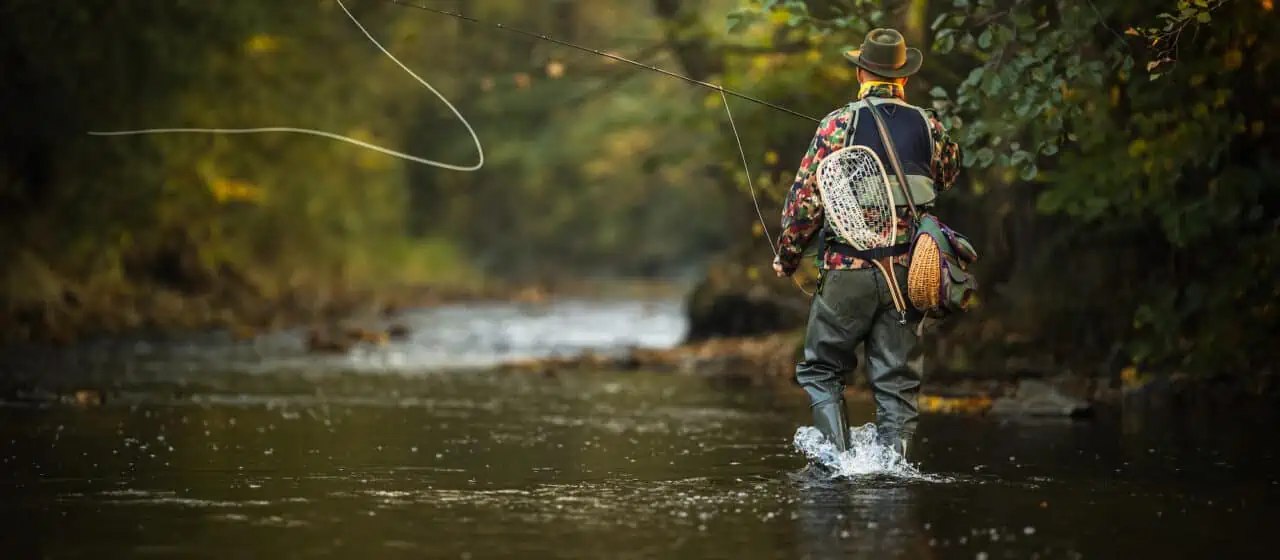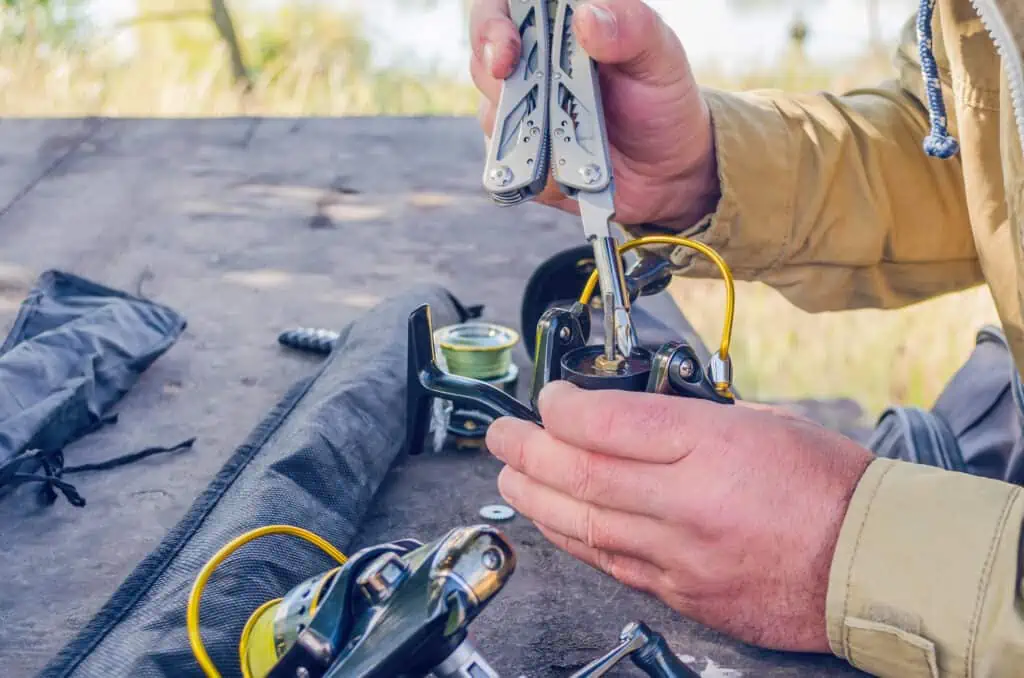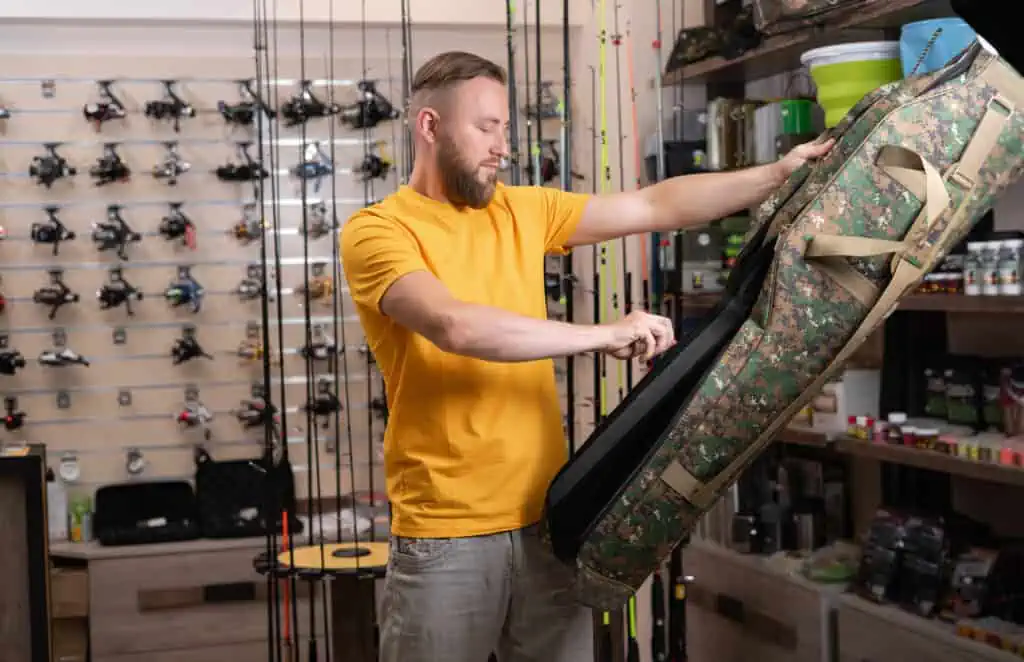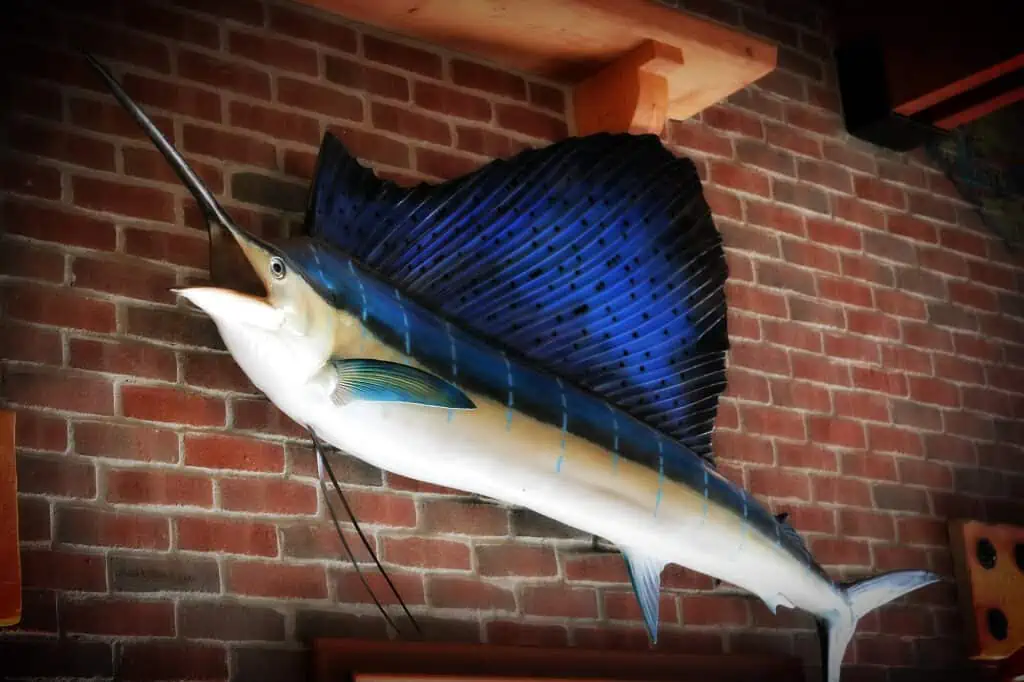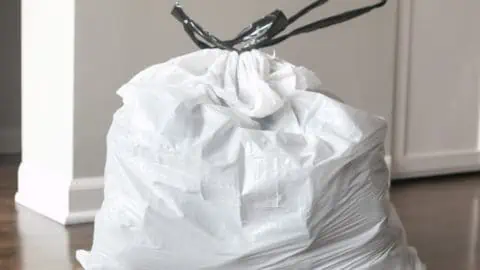How To Move Your Fishing Equipment
Posted in: I'm Moving, How To Pack, Movehacks, Moving AdviceIf you’re getting ready to move, you might dread getting your prized fishing gear packed up and transported. Any fishing enthusiast knows all too well that this equipment is delicate and expensive, so a lot of care needs to go into prepping and packing it the right way. And if you’ve been fishing all your life, you probably have a ton of rods, reels, lures, lines, and everything in between to sort through and organize.
How To Prep Your Fishing Gear Before You Pack
Before you get too deep into the packing process, it’s important to prepare all of your gear first. Here’s what to do:
Clean your gear
To avoid transferring grime or allowing debris to cause damage, give your equipment a thorough cleaning as you would before storing for the off-season. Break down your fishing rods by removing the reel, and then wipe down the rod with a damp cloth to remove any dirt, grime, or salt.
“You can ensure your rods are packed tightly enough by shaking the cases a bit. If you don’t hear any rattling or movement, you’re good to go.”
Make sure to clean the guides, reel seat, and grip thoroughly, too. You can use a soft brush to clean the exterior of the reel, paying special attention to the line roller, bail arm, and spool. Open the reel and carefully clean the internal components, such as the gears and bearings. Apply a light coating of reel oil to the bearings and a dab of grease to the gears. And always allow your gear to dry completely before reassembling and storing, otherwise you could end up with rust.
Check for damage
Inspect your gear for any signs of damage or wear. If you find any issues, make a note and then schedule time on your calendar to get them repaired before using the equipment at your new destination. (This also helps you know if your movers may have caused any damages to your equipment, or not.)
Sort your tackle
Now is a good time to get rid of any extra junk you’ve accumulated in your tackle box. So go through it and discard any damaged or rusted lures, hooks, and sinkers (we’ll discuss how to dispose of old gear in the next section).
How Do I Dispose of Old Fishing Gear?
First, if you have any gear that’s in decent condition (rods, lifejackets, waders, etc.), consider donating them to a local organization instead of throwing them away. In addition to charities, there may be community organizations, schools, or outdoor programs that could use your stuff. You can also contact your local recycling center to find out if anything is eligible to be recycled.

When disposing of old fishing gear, it’s important to consider the potential environmental impact and follow proper disposal methods. Old fishing line can get caught around wildlife and plants, while hooks and other sharp objects could be swallowed by animals and injure them.
If you’re getting rid of any used fishing line, you may be able to find a monofilament recycling bin in your area–often found at boat ramps, marinas, or tackle shops – and deposit the used lines there. If there aren’t any recycling bins nearby, cut the line into small pieces to minimize the risk of entanglement, and throw it out in your regular household trash.
“Extreme heat or cold, as well as harsh, direct sunlight can cause your equipment to fade, crack, or lose its shelf life. Make sure you store your gear in a dry, cool, and well-ventilated area to prevent any damage.”
Consider repurposing old fishing net material for other uses, such as garden trellises or craft projects. Otherwise, dispose of it the same way you would for lines, by cutting the net into smaller pieces and tossing it in the trash.
For hooks, sinkers, and other metal or sharp pieces, place them inside a sturdy container like an old Gatorade bottle or Coke can, or wrap them in protective material before throwing them away to reduce the risk of injury.
How To Wrap Your Fishing Gear Properly
Once you have all your gear cleaned and sorted, you can get ready to start packing.
What you’ll need
- Fishing rod cases or PVC tubes: You’ll need specially designed protective tubes or cases for transporting fishing rods, which keep them from getting damaged during the move. If you don’t already have a rod case, you can purchase one or make your own using PVC pipe from your local hardware store.
- Bubble wrap: This or a similar cushioning material is essential for protecting your reels and other delicate equipment.
- Packing tape: Use this to seal your rod cases, secure bubble wrap around your gear, and reinforce cardboard boxes.
- Moving blankets or towels: These will provide additional padding for your equipment and protect it from scratches.
- Cardboard boxes: You’ll need sturdy boxes to pack your tackle box, reels, and other smaller items.
- Wooden or plastic crates: In some cases, cardboard won’t be durable enough, especially when protecting extra delicate and sentimental items like mounts and other keepsakes (more info on packing these later).
- Permanent marker: You’ll need to clearly label your boxes and rod cases so you know exactly what’s inside.
See prices for local moving labor. Read real customer reviews. Easily book your help online.
How To Pack Fishing Rods for Moving
Your fishing rods are going to require some special attention when packing. They’re delicate, and also an awkward shape. It’s easy for rods to get broken if they’re not packed properly.
- Remove the reel from the rod (if you haven’t already): This will make the rod easier to handle and reduce the risk of damage. If you have a two-piece rod, separate the sections for easier packing.
- Organize rods by size: This will help you determine what size case(s) you’ll need, and how many.
- Obtain a rod case or tube: A fishing rod case is designed to protect the rod during transport. You can find these at sporting goods stores like Bass Pro Shops or Dick’s Sporting Goods, or online retailers like Amazon. Alternatively, you can create a DIY rod tube using PVC pipes and end caps from your local hardware store. If you go this route, measure your rod sections and choose a tube with an appropriate length and diameter to accommodate them (you can pack about three together — don’t pack too tightly). You’ll want to add a few inches to the length of the longest rod you’re packing.
- Wrap the rod sections: Even if you’re using a rod case with built-in padding, you should wrap each rod section with bubble wrap, focusing on areas like the tip, guides, and reel seat. Use packing tape to secure the bubble wrap in place, but avoid applying tape directly to the rod.
- Insert the rod sections into the case or tube: Carefully slide the wrapped rod sections into the rod case or tube. If you’re using a PVC pipe, make sure the end caps are securely attached. You may add extra padding, such as foam or bubble wrap, inside the tube to keep the rod sections from shifting during transit.
- Seal and label the case: Once the rod sections are in the case, close and securely fasten it. Use a permanent marker to label each case with your name, contact information, and a description of the contents (aka “fishing rods”) to prevent any mix-ups or confusion.
- Do a shake test: You can ensure your rods are packed tightly enough by shaking the cases a bit. If you don’t hear any rattling or movement, you’re good to go.
- Pack your cases: Once your fishing rods are packed in their tubes or cases, place them in a sturdy cardboard box. Fill any gaps with packing materials like packing peanuts or bubble wrap to prevent them from moving around during transportation.
How To Pack Fish Mounts and Keepsakes
Your fishing rods aren’t the only large, delicate items to worry about when moving. In fact, you might have irreplaceable mounts, trophies, or collectibles that you absolutely can’t afford to have damaged. Follow these steps when packing these types of keepsakes:
- Prepare your boxes: If you’re using standard-sized cardboard boxes, reinforce the bottom with packing tape. For larger or especially delicate items, you may want to invest in some sturdier crates that can’t be crushed or damaged as easily. Line the bottom of your containers with a layer of bubble wrap, foam padding, or packing peanuts for extra cushioning.
- Wrap fishing mounts: For mounted fish, wrap the entire mount with bubble wrap, ensuring the fins and tail are well protected. For delicate or fragile keepsakes, wrap each item individually with bubble wrap, packing paper, or foam sheets. Secure the wrap with packing tape.
- Pack the items in the boxes: Mounted fish should be packed individually and insulated so there is no movement inside the box. For everything else, place the heaviest and sturdiest items on the bottom of the box. Smaller items can be placed in smaller boxes or plastic containers with lids and stacked on top. Fill any empty spaces with packing peanuts or crumpled packing paper to prevent movement.
- Label the boxes: Clearly label each box with a description of the contents and indicate if the contents are fragile.
- Load your boxes: Keep the boxes with delicate items separate from heavier items, and avoid stacking them under heavy or bulky items. Place these boxes in an area of the truck where they are least likely to move around during transport.
If you have very large mounts — or simply don’t want to take an ounce of risk — consider hiring a company that specializes in transporting taxidermy, such as Trophy Transport or Taxidermy Freight. It could cost you a few hundred dollars or more to use these services, but it could be well worth your peace of mind.
Transporting Boats and Dinghies
If you also have your own fishing boat, that can add a layer of complexity to your move. There are a few options available for hauling a boat to a new location:
- Overland transport: This involves hauling your boat in a boat trailer that’s pulled by a specialized vehicle. You’ll need to ensure your boat is properly secured in the trailer. Out of all the options, this one tends to be the most cost-effective.
- Water transport: If you’re transporting a boat between coastal areas, you may need to have it shipped via a tug or barge. This option is more expensive due to added costs of fuel, port fees, and more.
- Air freight: Boats that are too big and heavy to be towed on the road may need to be shipped by air freight. This is usually only necessary for superyachts or cargo ships, not modest fishing boats. However, if you need your boat moved quickly, this may be an option.
- Container shipping: This is a more cost-effective way to ship boats internationally. The boat is loaded into a flat rack or enclosed shipping container, then sent off by truck or rail before being loaded onto a larger vessel for transport to the final location.
You can minimize the cost of transporting your boat by looking for shared load opportunities, where multiple boats are shipped together.
Looking for movers to help? Click here.
How To Unpack and Reorganize Your Fishing Equipment

Once you’ve reached your new home, it’s time to get unpacked and organized. The good news is that the prep work you did before moving should make this a fairly simple and straightforward process.
- Choose the right room. Ideally, you will have a dedicated area in a room available to store all of your fishing equipment. That may be your garage, basement, she-shed, or any other place where you can set up and work on your gear with enough space and comfort.
- Watch out for extreme temperatures and light. Extreme heat or cold, as well as harsh, direct sunlight can cause your equipment to fade, crack, or lose its shelf life. Make sure you store your gear in a dry, cool, and well-ventilated area to prevent any damage.
- Use rack storage: Open wall space can be used to hang fishing rods, either with horizontal rod racks or vertical hanging systems, keeping them safe from damage and freeing up floor space.
- Pack in clear storage bins: For larger items like life vests, waders, and nets, it’s best to keep them in clear, stackable storage bins so you can keep them out of the way but still easily see where things are. It’s a good idea to also label the bins so you can quickly scan and find what you need.
- Install pegboards: A pegboard on the wall is a great place to hang smaller accessories like pliers, scissors, and fishing hats. Use hooks or clips for a customizable and easily accessible storage solution that doubles as a display.
- Store soft plastics: Use plastic binder pages or zippered plastic bags to store and organize soft plastic lures. Group them by type, color, or size, and store the pages or bags in a binder or a designated storage container.
- Keep line organized: Keep fishing line spools in a line spool box or a homemade spool holder made from PVC pipe, dowels, or a shoebox.
- Consider custom storage solutions: If you have a bigger budget and/or a lot of equipment, you might want to look into storage options that are designed for fishing gear. For example, you could purchase a fly fishing rod closet that allows you to store your rods without having to break them down every time you use them. Or you could build a storage cabinet specific to the types of gear you own that fits your unique space.
For some people, the sport of fishing is more than just a hobby. It’s a way to escape the pressures of work and social obligations, connect with nature, and improve mental health. If fishing is an important part of your life, you want to make sure that your precious gear and keepsakes are well cared for. So if you need to move, taking the extra time and care to prep, pack, and move your equipment will ensure it arrives in your new home in tact and ready to take out on the water.

